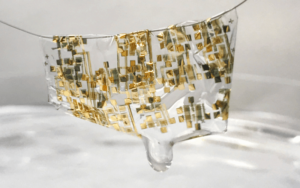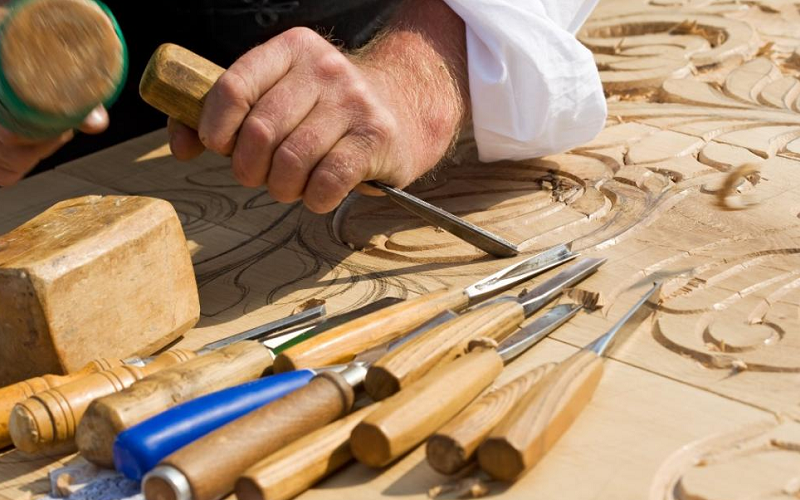
Wood carving is a form of art that has been around for centuries. It involves carving, chiseling, and shaping wood to create intricate designs, sculptures, and functional objects. Wood carving is a versatile skill that can be used to create anything from a simple spopon to an elaborate statue. This article serves as a guide to wood carving, covering everything from the necessary tools and materials to carving techniques, safety precautions, and tips for beginners.
What Is Wood Carving?
Wood carving is an ancient and traditional art form that involves shaping and carving wood into intricate designs, sculptures, and functional objects. It is a skill that has been passed down from generation to generation, and it remains popular today among artists, woodworkers, and hobbyists alike.
The process of wood carving typically involves the use of specialized tools, including knives, chisels, gouges, and saws. These tools are used to remove layers of wood from the surface and create shapes and contours that form the desired design.
Wood carving can be done on a variety of different types of wood, including hardwoods like oak and maple, softwoods like pine and cedar, and even exotic woods like mahogany and ebony. The type of wood used will often depend on the desired look and feel of the finished piece.
Wood carving has a rich history and is a part of many different cultures around the world. It has been used to create everything from decorative items like figurines and ornaments to practical objects like furniture and tools. In some cultures, wood carving is even considered a spiritual or religious practice.
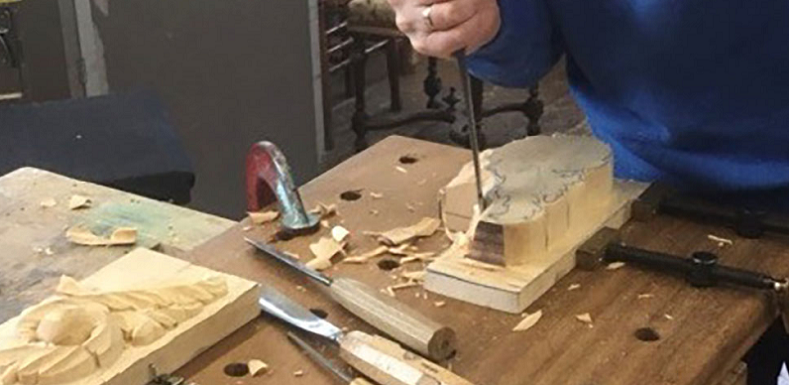
Wood Carving Tools and Materials
Wood carving requires a variety of specialized tools and materials to create intricate designs and sculptures. Here is an overview of the essential tools and materials needed for wood carving.
Tools:
- Carving knives: A carving knife is a sharp blade with a pointed tip used for shaping and carving wood. These knives come in various sizes and shapes, including straight, curved, and hook blades.
- Chisels: Chisels are flat blades with a sharp edge used for cutting and shaping wood. They come in different shapes and sizes, including straight, skew, and V-shaped chisels.
- Gouges: Gouges are similar to chisels but have a curved blade. They are used to create curved or rounded shapes in the wood.
- Saws: Saws are used to cut through the wood, either for rough cuts or to remove large sections of wood. They can be hand saws or power saws, depending on the desired level of precision.
- Mallet: A mallet is a hammer-like tool used to strike chisels and gouges. It provides greater force than a regular hammer and is less likely to damage the tools.
Materials:
- Wood: The type of wood used for carving can vary depending on the desired look and feel of the finished piece. Hardwoods like oak, maple, and cherry are popular choices for their durability and beauty, while softwoods like pine and cedar are easier to carve but may be less durable.
- Sandpaper: Sandpaper is used to smooth and polish the surface of the wood. Different grits of sandpaper can be used to achieve different levels of smoothness.
- Finishing products: After carving is complete, finishing products like stains, oils, and varnishes can be used to protect the wood and enhance its appearance.
- Safety equipment: Safety is essential when working with sharp tools and power equipment. Protective gear like gloves, goggles, and a dust mask should be worn to prevent injuries and inhaling harmful dust particles.
Wood Carving Techniques
Wood carving is a complex and intricate art form that involves many different techniques. The most common wood carving techniques include relief carving, intaglio carving, chip carving, carving with gouges, carving with chisels, whittling, power carving, and pyrography.
Relief carving involves carving away sections of wood to create a raised design on a flat surface like panels or plaques. The design can be shallow or deep, depending on the desired effect. Intaglio carving is the opposite of relief carving. It involves carving into the wood to create a recessed design. This technique is commonly used for creating stamps, printing blocks, or decorative elements.
Chip carving involves making small, shallow cuts in the wood to create a pattern or design. The cuts are made using a small knife, and the technique is often used to create geometric or floral patterns. Carving with gouges is a technique used to create rounded shapes in the wood. Gouges are curved carving tools that can be used to create deep grooves, smooth curves, or decorative elements.
Carving with chisels is another common technique used for cutting and shaping wood. Chisels are flat blades with a sharp edge that can be used to create straight edges, flat surfaces, or angles. Whittling is a technique that involves carving away small pieces of wood using a knife. It is often used for creating small, decorative objects like figurines or ornaments.
Power carving is a technique that involves using power tools like rotary tools or angle grinders to shape and carve the wood. This technique is faster and more efficient than traditional hand carving but requires more skill and experience to use safely. Pyrography involves using a heated tool to burn designs into the wood. It can be used to create intricate designs or decorative patterns.
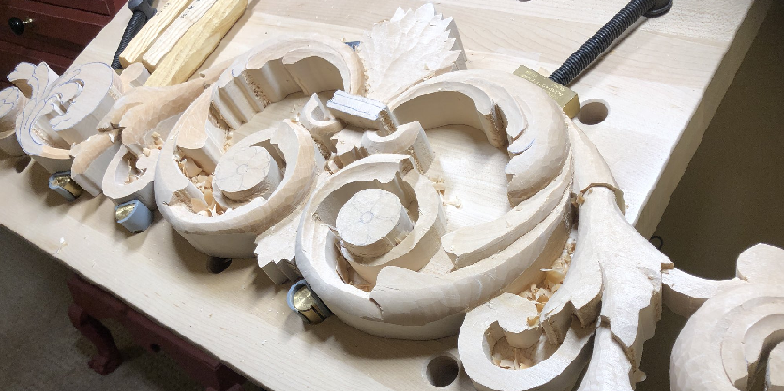
Wood Carving Safety Precautions
Wood carving can be a potentially dangerous activity, and it is important to take proper safety precautions to avoid accidents and injuries. The following are some important safety precautions to keep in mind when carving wood:
First and foremost, it is essential to wear protective gear such as safety goggles, gloves, and a dust mask to protect your eyes, hands, and lungs from potential injuries and dust particles. Using sharp carving tools is important to avoid slips and accidents. Maintaining sharp and well-maintained tools is crucial to ensure safety.
It is also important to secure the workpiece before starting to carve, making sure that it is securely clamped or held in place. This will prevent the wood from slipping or moving while you are carving, reducing the risk of accidents. Additionally, keeping your work area clean and free of clutter is essential to prevent accidents caused by tripping over tools or materials.
Avoiding distractions is also necessary when carving. Working in areas with distractions, such as loud noises or people passing by, should be avoided to help you stay focused on the task at hand and reduce the risk of accidents.
When carving, always work with the grain of the wood. Carving against the grain can cause the wood to split or chip, increasing the risk of accidents. It is also important to be aware of your surroundings and the people around you when carving. Do not carve near other people or in areas where someone could accidentally walk into your work area.
If using power tools, follow the manufacturer’s instructions carefully and take proper safety precautions, such as wearing ear protection and keeping loose clothing and hair away from the tool.
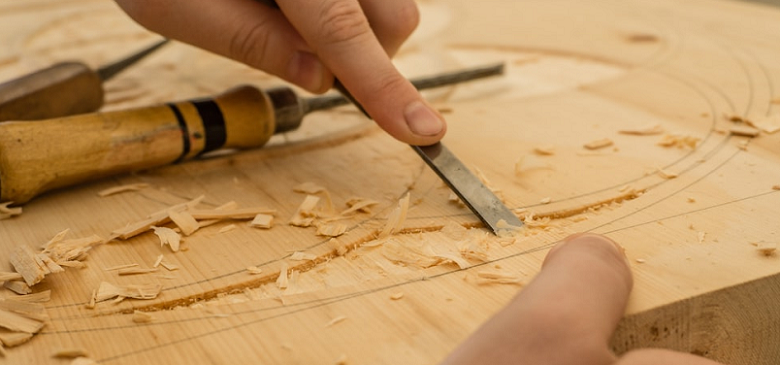
Wood Carving Tips for Beginners
Wood carving can be an intimidating and challenging activity for beginners. However, with dedication and practice, anyone can develop their skills and become proficient in the art of wood carving. Here are some helpful tips for beginners:
Starting with simple projects is important to build your confidence and skills. Choose a straightforward project like a spoon or a small figurine to begin with, and gradually work your way up to more complex pieces.
Choosing the right type of wood is also crucial. Softwoods like pine or basswood are easier to carve and are ideal for beginners. As you gain more experience, you can move on to harder woods like oak or walnut.
Learning from your mistakes is an essential part of the learning process. Don’t be discouraged if your first few projects don’t turn out as expected. Instead, use your mistakes as an opportunity to learn and improve your technique.
Keeping your tools sharp and well-maintained is essential for a smooth and safe carving experience. Dull tools can make carving difficult and increase the risk of accidents.
Using a carving glove can protect your hand from injuries when using sharp tools. It’s a good idea to wear a glove on the hand that holds the wood while you carve.
Practicing good posture is also important to avoid back pain or strain. Sit with your back straight and your feet flat on the ground.
Taking breaks is crucial to prevent fatigue and rest your hands. Stretch your hands and take a break every 30 minutes to an hour.
Attending workshops or classes can be a great way to learn new techniques and connect with other wood carvers. Look for classes or workshops in your area or online to help you improve your skills.
Advanced Wood Carving Techniques
Advanced wood carving techniques require a higher level of skill and experience and can be used to create intricate designs and sculptures. Inlay is a technique that involves inserting a contrasting material, such as metal or another type of wood, into a carved-out design, adding texture and visual interest to the finished piece. Pierced carving involves carving out sections of the wood to create negative spaces and open areas, requiring a high level of precision and skill and creating stunning, intricate designs.
Bas relief carving is a technique that involves carving a design into the surface of the wood, creating a shallow relief that can be used to create intricate designs and can be combined with other techniques like inlay or painted finishes. Carving in the round involves creating a three-dimensional sculpture out of a single piece of wood, requiring a high level of skill and creating stunning, lifelike sculptures.
Woodturning involves using a lathe to turn a piece of wood while carving it with a variety of cutting tools, often used to create symmetrical or cylindrical shapes like bowls, vases, or spindle legs. Texturing involves adding texture to the surface of the wood by carving or scraping the surface, creating a variety of effects, including rough or smooth surfaces or adding visual interest to the finished piece.
Scrimshaw is a technique that involves carving designs into bone or ivory, often inlaid with ink or other pigments, and can be applied to wood carving to create intricate, detailed designs and patterns. Advanced wood carving techniques require a high level of skill and experience, but can create stunning, intricate designs and sculptures. These techniques can be combined and used together to create unique and visually striking works of art.
Finding Wood Carving Inspiration
Finding inspiration for wood carving can be a challenging task, especially for beginners. Here are some tips for finding wood carving inspiration:
- Look at other wood carvers’ work: Browse online galleries, social media platforms, or visit local art shows to see other wood carvers’ work. Observe their techniques, styles, and use of wood. Analyzing and learning from other wood carvers’ work can help you find inspiration for your own projects.
- Explore your surroundings: Take a walk outdoors and observe the natural world around you. Look for patterns, shapes, and textures in trees, plants, and rocks that can inspire your wood carving projects.
- Visit museums and art galleries: Visit museums and art galleries to see a wide range of art forms and styles. This exposure can help you develop an understanding of different artistic techniques and inspire you to create unique wood carvings.
- Use your imagination: Sometimes the best inspiration comes from within. Let your imagination run wild and create something that has never been done before. You can start by sketching your ideas on paper and then bring them to life with wood carving.
- Explore historical and cultural styles: Look into historical and cultural styles of wood carving, such as Native American or Scandinavian styles. Learning about these styles can help you develop an appreciation for different cultures and artistic traditions and inspire you to create unique works of art.
- Consider personal interests and experiences: Think about your personal interests and experiences and how they can be translated into wood carving projects. This can include hobbies, travel experiences, or personal stories.
In conclusion, finding inspiration for wood carving projects can be a challenging task, but by exploring other wood carvers’ work, your surroundings, museums and art galleries, using your imagination, exploring historical and cultural styles, and considering personal interests and experiences, you can find the inspiration to create unique and beautiful works of art.






